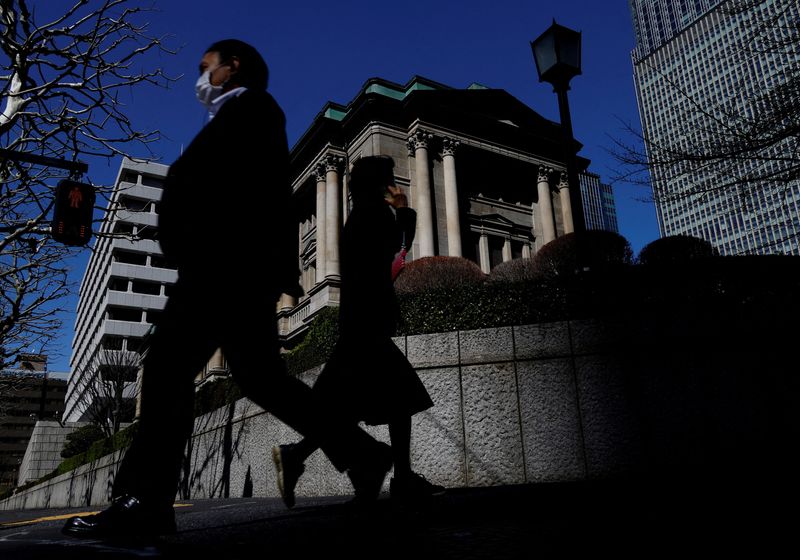BOJ panelist calls for steady rate hikes, warns of inflation risk
2024.05.31 02:20
By Leika Kihara and Takahiko Wada
TOKYO (Reuters) – The Bank of Japan must steadily raise interest rates to guard against the risk of inflation accelerating well above its 2% target, said Takeo Hoshi, an academic with knowledge of the country’s monetary policy.
Japan’s wage-inflation dynamics are changing in ways unseen in the past with intensifying labour shortages pushing up labour costs and prodding more firms to hike prices, said Hoshi, an economics professor at the University of Tokyo.
Having ended a package of unconventional easing steps in March, the BOJ will keep raising rates to anchor inflation expectations around 2%, and eventually start quantitative tightening, Hoshi told Reuters in an interview on Friday.
“Unless the BOJ raises rates, inflation could accelerate too much. The kind of inflation seen in the U.S. and Europe could very much happen in Japan,” said Hoshi, who has close ties with incumbent BOJ policymakers.
“There’s a significant risk of inflation exceeding the BOJ’s target. That’s something the central bank should worry about from now on,” he said.
Hoshi declined to say how soon the BOJ could raise its interest rate from current near-zero levels, but said hikes should happen “steadily” given upside risks to inflation.
“In deciding when to shift policy, the BOJ must also take into account how its U.S. and European counterparts move as that could affect asset prices including exchange rates,” he said.
Hoshi participated in the BOJ’s workshop held on May 21, which was part of a review of the pros and cons of its past unconventional monetary policy. He chaired a session that analysed Japan’s economic and price developments.
The BOJ ended eight years of negative rates and a policy capping long-term borrowing costs around zero in March, making a historical shift away from its radical stimulus.
BOJ Governor Kazuo Ueda has said the central bank intends to hike rates to levels considered neutral to the economy, as long as growth and inflation move in line with projections.
Many market players expect the BOJ to raise rates sometime this year with some betting on action as soon as in July.
Expectations of a near-term rate hike pushed up the 10-year Japanese government bond yield to 1.10% on Thursday, the highest since July 2011. The benchmark yield stood at 1.065% on Friday.
Hoshi said the recent rise in 10-year yields was a “good sign” that showed the BOJ’s decision to end its bond yield control was allowing yields to be driven more by market forces.
But the BOJ must be careful in communicating a strategy for slowing bond buying, and eventually selling bonds, as the huge size of its holdings could magnify the market impact, he said.
“One idea could be for the BOJ to communicate how it would unload its huge bond holdings in, say, 20 years. In doing so, it needs to remind markets that the plan isn’t set in stone, and could change depending on circumstances,” Hoshi said.

Japan’s core inflation hit 2.2% in April, staying above the central bank’s target for more than two years, as companies continued to pass on rising raw material costs to households.
The BOJ has stressed the need to keep interest rates low until inflation becomes driven more by sustained wage hikes and robust domestic demand. Ueda has also said inflation expectations are now around 1.5%, short of the BOJ’s 2% target.








